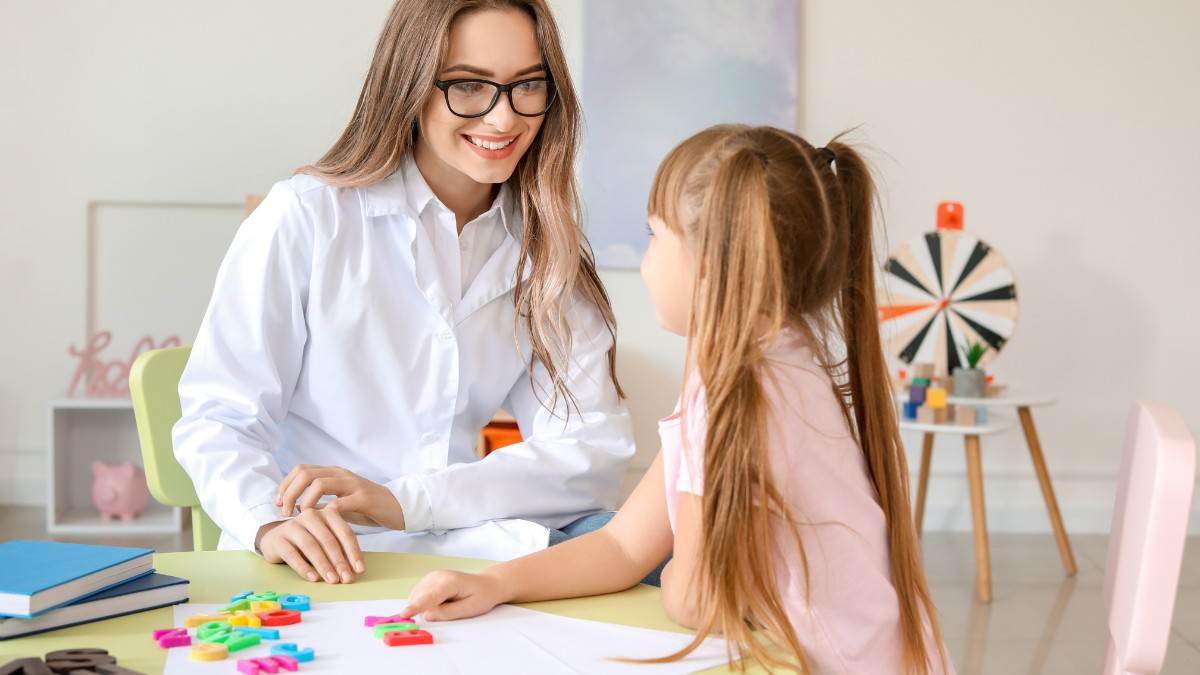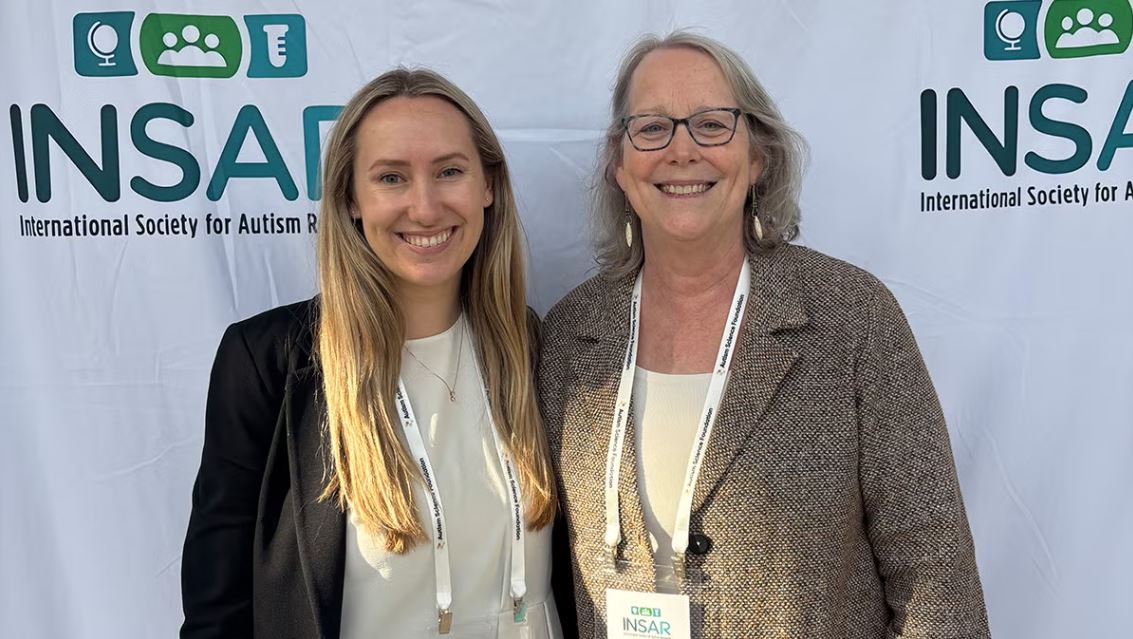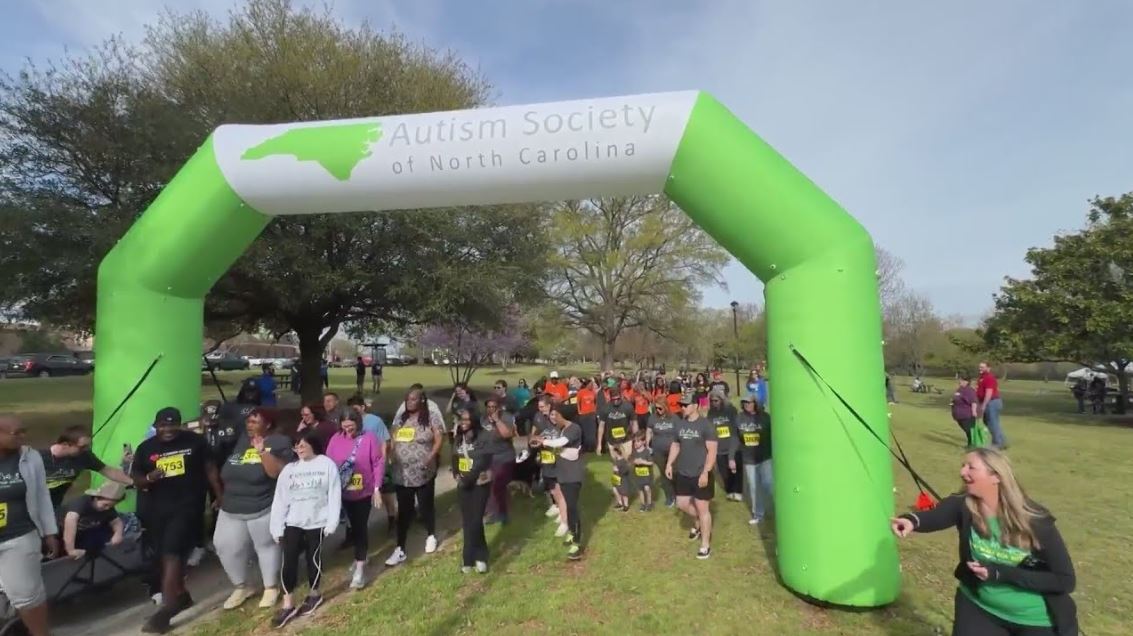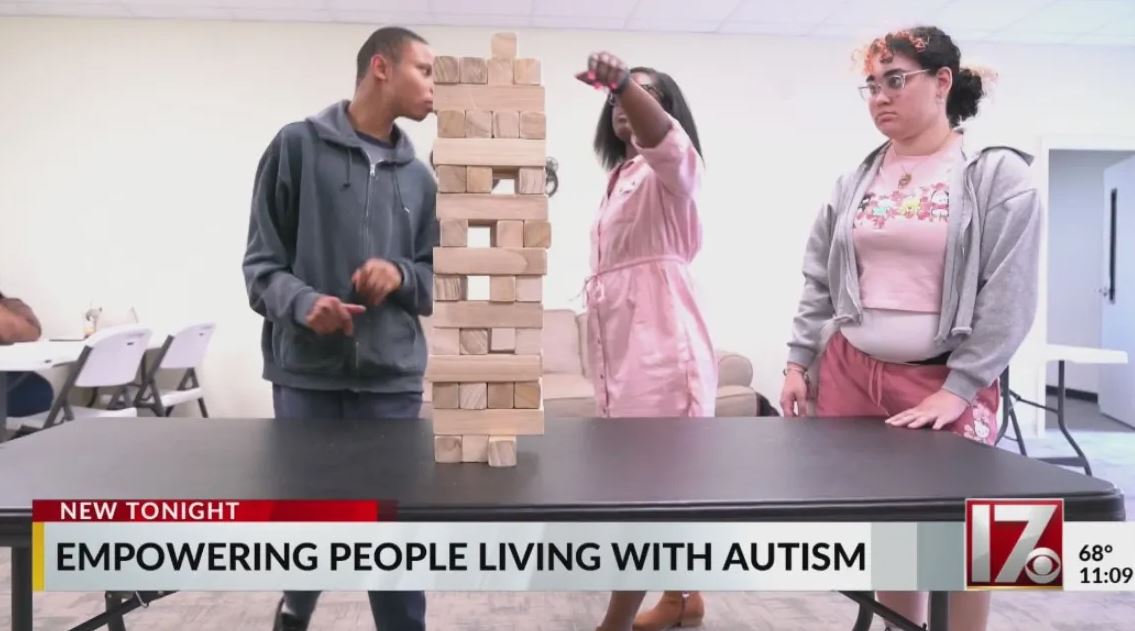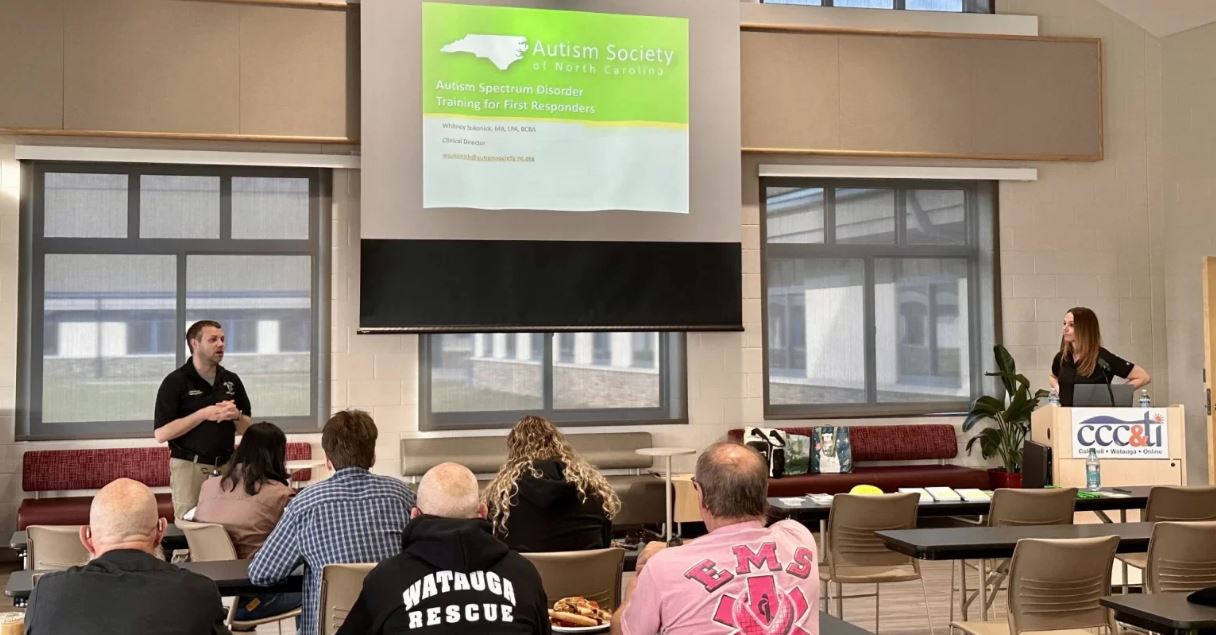Building Bridges: Inclusive Activities for Autistic Teenagers

Social and Recreational Activities for Autistic Teenagers
Engaging in social and recreational activities is important for the overall development and well-being of autistic teenagers. Organized social activities provide numerous benefits, promoting the exploration of interests, building confidence, self-worth, and valuable social skills for both present and future endeavors. Autistic teenagers are just as interested in these activities as their typically developing peers, often finding comfort in the structure and routine that organized social activities offer.

Benefits of Organized Social Activities
Participating in organized social activities can have a positive impact on autistic teenagers. These activities provide opportunities for individuals to engage with peers, fostering social connections and friendships. Here are some key benefits of organized social activities for autistic teenagers:
- Exploration of Interests: Organized activities allow autistic teenagers to explore their interests, whether it's sports, arts, music, or other hobbies. By participating in activities that align with their passions, they can enhance their skills and discover new talents.
- Building Confidence and Self-Worth: Engaging in social activities helps autistic teenagers develop confidence in their abilities and build a sense of self-worth. As they interact with others, they gain a greater understanding of their strengths and unique qualities.
- Social Skill Development: Organized activities provide a structured environment for autistic teenagers to practice and develop social skills. Through interaction with peers and mentors, they can improve communication, teamwork, and problem-solving skills.
- Enhanced Well-being: Participating in social activities contributes to the overall well-being of autistic teenagers. It offers opportunities for enjoyment, stress relief, and a sense of belonging, which can have a positive impact on mental health.
Finding Suitable Activities
Finding suitable social and recreational activities for autistic teenagers requires consideration of their interests and strengths. Parents can start by discussing their child's interests and preferences to identify activities that align with their passions. It's important to involve the teenager in the decision-making process to ensure their active engagement and enjoyment.
Here are some strategies to find suitable activities for autistic teenagers:
- Research Local Programs: Explore community programs, clubs, and camps that offer activities tailored for autistic individuals. These programs often provide a supportive and inclusive environment where teenagers can engage with peers who share similar interests.
- Consider Existing Social Groups: Look for existing social groups or clubs that focus on activities your teenager enjoys. These groups can provide opportunities for socializing, skill-building, and shared experiences with like-minded individuals.
- Create Opportunities: Autistic teenagers may also be interested in starting their own social groups or organizing events for individuals with similar interests and needs. This allows them to take on leadership roles, foster social engagement, and create a sense of community.
By actively seeking out suitable social and recreational activities, parents and caregivers can provide autistic teenagers with meaningful opportunities for social interaction, skill development, and personal growth.
Joining Existing Social and Recreational Activities
For autistic teenagers, joining existing social and recreational activities can provide valuable opportunities for socialization, skill development, and building friendships with peers who share similar interests and experiences. Participating in community programs, camps, and other organized activities can help create an inclusive environment where autistic teenagers can thrive.
Community Programs and Camps
Community programs and camps offer a wide range of social and recreational activities that cater to the diverse interests of autistic teenagers. These programs often provide a supportive environment where young people can engage in activities alongside their peers. By joining these programs, autistic teenagers have the chance to explore their interests, build self-esteem, and develop social skills.
These community programs and camps may include sports programs, art classes, theater groups, outdoor adventures, and more. By participating in these activities, autistic teenagers can learn valuable skills, foster friendships, and experience personal growth. It's important for parents and caregivers to research and identify community programs and camps that align with the interests and needs of their autistic teenagers.
Starting Social Groups or Events
In addition to joining existing activities, autistic teenagers may also be interested in starting their own social groups or organizing events. This allows them to take on leadership roles and create opportunities for social engagement and skill development. By initiating these groups or events, autistic teenagers can connect with others who have similar interests and needs, fostering a sense of belonging and empowerment.
Starting a social group or organizing an event can be a collaborative effort involving autistic teenagers, their families, and the community. These initiatives can focus on specific interests such as gaming, art, music, or any other shared passion. Autistic teenagers can actively participate in planning, promoting, and facilitating these activities, which can enhance their social skills, boost self-confidence, and provide a sense of accomplishment.
By joining existing social and recreational activities or starting their own groups, autistic teenagers can create meaningful connections, develop social skills, and experience a sense of inclusion. Engaging in these activities provides opportunities for personal growth, self-expression, and a greater sense of belonging. It is essential to support and encourage autistic teenagers in their pursuit of social engagement, ensuring that they have access to a variety of inclusive activities that cater to their interests and needs.
Physical Activities for Autistic Teenagers
Engaging in physical activities can have numerous benefits for autistic teenagers. Exercise interventions and physical activity programs specifically designed for individuals with autism can have a positive impact on their overall well-being and development.
Exercise Interventions and Benefits
Research has shown that exercise interventions can lead to significant benefits for autistic teenagers. A study conducted in 2018 found that children with Autism Spectrum Disorder (ASD) who underwent a 48-week exercise intervention experienced improvements in their metabolic health, including cholesterol levels, as well as reductions in autism traits. This resulted in increased parent perceptions of their child's quality of life compared to non-exercising controls.
Furthermore, an analysis of 29 studies in 2018 demonstrated that physical activity programs had a moderate or large effect on various outcomes in over 1,000 youth with ASD. These outcomes included the development of motor skills, skill-related fitness, social functioning, and muscular strength and endurance.
A systematic review conducted in 2010, which explored 18 studies on physical activity interventions in individuals with ASD, revealed improvements in physical fitness and a reduction in stereotypical, aggressive, and off-task behaviors.
However, it is important to note that a 2020 review of 21 studies indicated that only 42% of participants with ASD met recommended physical activity guidelines. This suggests that there is a need for effective programs that promote physical activity for children and adolescents with autism.
Impact of Physical Activity Programs
Physical activity programs designed for autistic teenagers can have a significant impact on their overall well-being. These programs aim to improve not only physical fitness but also various aspects of their development.
In addition to enhancing motor skills and skill-related fitness, physical activity programs can contribute to the development of social functioning. Through structured activities and group settings, autistic teenagers have opportunities to engage with their peers, fostering social interactions and friendships. This can improve their social skills, increase their self-confidence, and enhance their overall quality of life.
Moreover, participating in physical activities can help reduce stereotypical behaviors, aggression, and off-task behaviors commonly associated with autism. Engaging in regular exercise can provide an outlet for excess energy, leading to improved focus and attention.
Aquatic therapy, in particular, has been shown to be beneficial for individuals with ASD. This form of therapy, conducted in a pool, utilizes the properties of water to improve motor skills and functional performance in children with autism.
By incorporating exercise interventions and physical activity programs into the lives of autistic teenagers, we can promote their physical and mental well-being, support their overall development, and enhance their quality of life.
Technology-Based Activities for Autistic Teenagers
In today's digital age, technology plays an increasingly important role in the lives of individuals with autism spectrum disorder (ASD). Technology-based activities offer unique opportunities for autistic teenagers to engage, learn, and develop various skills. Let's explore the use of technology in educational contexts and the benefits it brings to the autism community.
Use of Technology in Educational Contexts
The use of technology in educational contexts has proven to be highly beneficial for individuals with ASD. According to a study published in the National Center for Biotechnology Information, technology provides a safe and structured environment that individuals with ASD naturally gravitate towards and enjoy interacting with.
Technological advancements such as virtual agents, artificial intelligence, virtual reality, and augmented reality have opened up new avenues for learning and skill development. These technologies create immersive and engaging experiences, enabling autistic teenagers to learn and practice various skills in a comfortable and supportive environment.
Researchers have explored the effectiveness of various technological approaches in teaching skills to individuals with ASD. These include mobile applications, virtual reality simulations, robots with cameras, serious games, and augmented reality experiences. The studies reviewed demonstrated the positive impact of these interventions on skill acquisition and development.
To ensure the effectiveness of technology-based interventions, it is important to consider user experience, usability, and accessibility. Tailoring these interventions to the unique needs of individuals with ASD enhances their engagement and learning experience. However, it is worth noting that user experience and accessibility factors are often underexplored and need to be adequately addressed in the development of technology-based interventions for individuals with ASD.
Benefits of Technology for Autism
Technology offers several benefits for autistic teenagers, aiding their learning, communication, and socialization skills. Here are some key advantages:
- Structured Learning Environment: Technology provides a structured and predictable learning environment that can help individuals with ASD thrive. The consistent format and visual cues in technology-based activities contribute to better understanding and engagement.
- Customization and Personalization: Technology allows for personalized learning experiences tailored to the unique needs and preferences of autistic teenagers. Adaptive technologies can adjust the level of difficulty, pacing, and content to match individual abilities and learning styles.
- Enhanced Social Interaction: Technology-based activities can facilitate social interaction and communication skills development. Virtual environments and social networking platforms provide opportunities for individuals with ASD to connect with peers, practice social skills, and build relationships.
- Visual Supports and Reinforcement: Technology offers visual supports, such as visual schedules, social stories, and visual cues, which are highly beneficial for individuals with ASD. These supports aid comprehension, organization, and independence in daily activities.
- Motivation and Engagement: Many autistic teenagers exhibit a natural affinity for technology. The interactive and engaging nature of technology-based activities can motivate individuals with ASD to actively participate and learn.
By harnessing the power of technology, autistic teenagers can unlock their potential, develop new skills, and embark on an inclusive educational journey. It is important to consider the individual needs and preferences of each teenager when selecting and implementing technology-based activities to ensure a positive and enriching experience.
Developing Social Skills
Developing social skills is crucial for autistic teenagers as it can greatly enhance their ability to form meaningful relationships and navigate social interactions. Here, we will explore the importance of social skills for autistic teenagers and provide strategies for their social skills development.
Importance of Social Skills for Autistic Teenagers
Autistic teenagers may face challenges in social interactions due to inherent neurological differences. Difficulties in establishing social connections can lead to negative outcomes such as poor academic achievement, social failure, anxiety, depression, and substance abuse. Therefore, it is essential to focus on developing their social skills to help them thrive and succeed in various social contexts.
Enhanced social skills enable autistic teenagers to effectively communicate, understand non-verbal cues, and engage in reciprocal interactions. These skills lay the foundation for building friendships, collaborating with others, and participating in group activities. By developing social skills, autistic teenagers can improve their overall quality of life and enhance their social well-being.
Strategies for Social Skills Development
There are various strategies and techniques that can be employed to support the development of social skills in autistic teenagers. Here are some effective approaches:
- Role-Playing: Role-playing provides an opportunity for autistic teenagers to practice social interactions in a safe and controlled environment. It allows them to learn and rehearse appropriate responses to different social situations.
- Self-Management Techniques: Teaching self-management techniques empowers autistic teenagers to regulate their own behaviors in social settings. This includes strategies such as self-monitoring, self-evaluation, and self-reinforcement.
- Joining Social Groups or Hobby-Based Groups: Encouraging autistic teenagers to join social or hobby-based groups provides them with opportunities to interact with peers who share similar interests. These groups offer a supportive environment for practicing social skills and developing friendships.
- Utilizing Social Media: Social media can be a valuable tool for social skills development. Autistic teenagers can practice communication, engage in online discussions, and learn social norms within the digital realm. However, it is important to monitor their online activities and ensure their safety.
- Participating in Social Skills Training Programs: Social skills training programs specifically designed for autistic teenagers can provide structured guidance and practice in various social scenarios. These programs often incorporate evidence-based techniques to enhance social skills and foster positive interactions.
- Creating and Using Social Stories: Social stories present social concepts and rules in the form of a brief story, helping autistic teenagers understand and navigate social situations. Personalizing social stories to the individual's specific needs and combining them with role-playing and video modeling can reinforce the skills introduced in the story.
- Watching TV Programs for Social Cues: Watching TV programs that showcase social interactions can help autistic teenagers learn from the characters' behaviors and responses. This can improve their understanding of social cues and appropriate social responses.
- Using Video Modeling: Video modeling involves watching a video demonstration of a behavior and then imitating it. This technique has been found to be effective in promoting social-communication skills and functional skills in children and adolescents with autism. Autistic teenagers can benefit from video modeling to learn and practice appropriate social behaviors.
- Employing Visual Supports: Visual supports, such as pictures and prompt cards, can assist autistic teenagers in understanding and remembering social skills. These visual aids provide clear cues and reminders, facilitating their application in real-life social situations.
By implementing these strategies, autistic teenagers can develop and refine their social skills, leading to increased confidence and successful social interactions. It is important to tailor these approaches to the individual's needs, preferences, and developmental level, ensuring that the support provided is appropriate and effective.
Art and Music Therapy
Art and music therapy offer valuable opportunities for autistic teenagers to explore their creativity, express themselves, and engage in meaningful activities. These therapeutic approaches have been shown to have numerous benefits for individuals on the autism spectrum.
Benefits of Art Therapy
Art therapy provides a safe and supportive environment for autistic teenagers to express themselves through various art forms. Some of the key benefits of art therapy include:
- Self-expression: Art allows individuals to communicate their thoughts, emotions, and experiences in a non-verbal and creative way.
- Emotional exploration: Engaging in art activities can help autistic teenagers explore and process their emotions, leading to increased self-awareness and emotional well-being.
- Skill development: Art therapy fosters the development of fine motor skills, visual-spatial skills, and hand-eye coordination.
- Stress reduction: Art activities can serve as a source of relaxation and stress relief, promoting a sense of calm and emotional balance.
Art therapy sessions are typically facilitated by trained professionals who guide individuals through different artistic techniques and encourage self-reflection. These sessions provide a supportive space for autistic teenagers to express themselves without judgment or pressure.
Benefits of Music Therapy
Music therapy has proven to be highly beneficial for autistic teenagers, impacting their emotional, cognitive, and social development. Some of the key benefits of music therapy include:
- Emotional expression: Music provides a powerful medium for individuals to express their feelings and emotions, even when words may be challenging.
- Improved communication: Engaging in music therapy can enhance communication skills, including verbal and non-verbal communication, as individuals respond to the rhythms, melodies, and lyrics of music.
- Enhanced social skills: Participating in group music activities promotes social interaction, cooperation, and turn-taking, helping to improve social skills and interpersonal relationships.
- Relaxation and stress reduction: Music has a soothing effect on the mind and body, helping to reduce anxiety and stress levels.
Music therapy sessions are tailored to the unique needs and preferences of each individual. They may involve singing, playing musical instruments, listening to music, and engaging in rhythmic activities. Trained music therapists guide participants in exploring and connecting with music in a supportive and therapeutic environment.
By incorporating art and music therapy into the lives of autistic teenagers, we can provide them with valuable opportunities for self-expression, emotional growth, skill development, and relaxation. These therapeutic approaches can play a significant role in supporting the overall well-being and quality of life of individuals on the autism spectrum.
Outdoor Adventures
Engaging in outdoor adventures can have numerous positive effects on autistic teenagers. Participating in nature-based activities offers a range of benefits that contribute to their overall well-being and development. These benefits include sensory stimulation, physical fitness, improved communication skills, increased problem-solving abilities, reduced stress and anxiety, and a sense of connection with nature.
Benefits of Outdoor Activities
Outdoor activities provide a unique sensory-rich environment for autistic teenagers. Connecting with nature through these adventures allows them to engage their senses and explore their surroundings. The benefits of outdoor activities for autistic teenagers include:
- Sensory Stimulation: Nature-based activities offer autistic teenagers the opportunity to experience various sensory inputs, such as feeling the wind, hearing the sounds of nature, and observing the beauty of the natural environment. These sensory experiences can be both calming and exciting, enhancing their sensory processing skills and providing a rich sensory diet.
- Physical Fitness: Engaging in outdoor adventures promotes physical fitness and overall well-being. Activities like hiking, biking, swimming, or simply playing in the park can help autistic teenagers develop their gross motor skills, strength, and coordination. Regular physical activity also contributes to better sleep patterns and increased energy levels.
- Improved Communication Skills: Outdoor activities provide a natural setting for social interaction and communication. Autistic teenagers can engage in conversations with family members, teachers, and peers while participating in these adventures. The relaxed and unstructured environment of outdoor settings encourages informal communication, fostering the development of social skills and meaningful connections.
- Increased Problem-Solving Abilities: Outdoor adventures offer opportunities for autistic teenagers to problem-solve and think critically. They may encounter obstacles, challenges, or unexpected situations that require them to adapt and find solutions. This helps enhance their cognitive skills, flexibility, and problem-solving abilities [9].
- Reduced Stress and Anxiety: Nature-based activities provide a calming and soothing environment for autistic teenagers. Being surrounded by nature and away from the demands of daily life can reduce stress and anxiety levels. The peacefulness and tranquility of natural settings have a positive impact on mental health and well-being.
- Sense of Freedom and Accomplishment: Participating in outdoor adventures offers autistic teenagers a sense of freedom, independence, and accomplishment. Overcoming challenges and achieving personal goals in nature-based activities can boost their self-esteem, confidence, and overall sense of achievement.
Connecting with Nature
Engaging in outdoor activities allows autistic teenagers to connect with nature, which can be a transformative experience. Connecting with nature offers a range of benefits for their well-being and development, including:
- Peace and Tranquility: Nature provides a peaceful and tranquil environment, promoting relaxation and reducing stress. The beauty and serenity of natural settings can have a calming effect on autistic teenagers, helping them find inner peace and tranquility [9].
- Curiosity and Exploration: Outdoor adventures stimulate curiosity and foster a love for the natural world. Autistic teenagers have the opportunity to explore their surroundings, discover new things, and engage with the environment. This sense of adventure and exploration nurtures a sense of wonder and curiosity, encouraging their innate desire to learn and discover.
- Sense of Connection: Connecting with nature allows autistic teenagers to develop a deeper connection with the natural world. Being immersed in natural environments can evoke feelings of awe, appreciation, and interconnectedness. This connection with nature enhances their environmental awareness and fosters a sense of responsibility towards the planet.
Outdoor adventures provide autistic teenagers with a unique opportunity to experience the benefits of nature and engage in activities that promote their overall well-being. Whether it's hiking, camping, gardening, or simply spending time in a park, the wonders of the great outdoors can create lasting memories and positive experiences for autistic teenagers.
Sensory Activities for Autistic Teenagers
Engaging in sensory activities can be highly beneficial for autistic teenagers. These activities focus on stimulating and regulating the senses, including sight, hearing, touch, taste, smell, motion, and balance. They can be tailored to meet the specific needs and preferences of each individual and can be implemented at home, in the classroom, or during therapy sessions.
Benefits of Sensory Activities
Sensory activities play a vital role in aiding sensory integration, reducing anxiety and stress, and helping develop a "sense of self" in autistic teenagers. Many individuals with autism struggle with sensory integration, which can lead to a sense of detachment from the world around them. Engaging in sensory activities can help regulate their sensory systems and manage arousal levels, promoting a more balanced and comfortable experience.
Customizing Sensory Experiences
Sensory activities can range from simple to more complex, depending on the individual's needs and interests. Here are a few examples of sensory activities for autistic teenagers:
- Listening to soothing music: Playing calming music can help create a relaxing environment and provide auditory stimulation.
- Nature walks: Exploring natural environments can offer a variety of sensory experiences, such as feeling different textures, observing vibrant colors, and listening to the sounds of nature.
- Video games: Certain video games can provide visual and auditory stimulation while also promoting cognitive development and coordination.
- Cooking and baking: Engaging in culinary activities allows for tactile experiences, exposure to various flavors and smells, and the satisfaction of creating something from scratch.
- Knitting, crocheting, or stitching: These activities offer a combination of tactile and visual stimulation and can be both relaxing and rewarding.
- Climbing and swinging: Physical activities like climbing and swinging provide sensory input through movement, helping regulate the nervous system and improve physical health.
It is important to adapt sensory activities to the individual's sensory profile. What may be enjoyable for one person may be overwhelming for another. By understanding and meeting the specific sensory needs of autistic teenagers, we can support their overall well-being.
Sensory activities can be further supported through the use of books and resources, occupational therapy, and collaboration with schools and therapists. By providing a safe and supportive environment, we can help autistic teenagers thrive and develop essential skills while enjoying the benefits of sensory engagement.
Supporting Autistic Teenagers in Virtual Classrooms
As virtual classrooms become more prevalent, it is essential to ensure that autistic teenagers receive the necessary support to thrive in this learning environment. By providing specific sensory supports and utilizing engaging learning materials, educators can create an inclusive virtual classroom experience for autistic students.
Sensory Supports in Virtual Classrooms
In virtual classrooms, it is important to consider sensory supports that can help autistic teenagers stay focused and engaged. Adapted seating, such as a comfortable chair or a cushion, can provide sensory input and promote better concentration. Handheld fidgets, such as stress balls or textured objects, can also be beneficial for students who benefit from tactile stimulation.
Furthermore, it is crucial to create a visually friendly virtual environment. Slideshows and presentations should have easy-to-read font styles and sizes, as well as appropriate visuals to enhance comprehension and engagement . Simple and uncluttered layouts can reduce sensory overload and help students focus on the content being presented.
Engaging Learning Materials
To support autistic teenagers in virtual classrooms, educators should strive to provide engaging learning materials. Teacher-created videos can be particularly beneficial as they offer repetition and individual guidance, which can enhance understanding and retention. These videos can be used in virtual, hybrid, or face-to-face instruction to accommodate different learning styles and preferences.
Additionally, interactive activities that allow students to actively participate and contribute can foster engagement and promote social interaction. These activities can include virtual group discussions, collaborative projects, and breakout rooms for small group work. Providing opportunities for students to connect with their peers and actively participate in the learning process can enhance their overall virtual classroom experience.
In virtual classrooms, paraprofessionals can also play a valuable role in supporting autistic teenagers. They can co-teach with the main instructor, use the chat box to message students for individual support, and lead mini-lessons to reinforce key concepts. The presence of paraprofessionals can help ensure that students receive the necessary attention and support they need to succeed in the virtual learning environment.
It is important to regularly reassess and update student accommodations in virtual classrooms. Some supports may no longer be needed, while new accommodations may be necessary. By working closely with students, families, and support professionals, educators can identify and implement appropriate accommodations to meet the unique needs of autistic teenagers in the virtual classroom setting.
Promoting Social Skills
Promoting social skills is essential for the development and well-being of autistic teenagers. There are various strategies and interventions that can be used to support their social growth. Two effective approaches are the social skills instruction model and peer-mediated interventions.
Social Skills Instruction Model
A systematic five-step model for social skills instruction can be utilized to address social skill deficits in autistic teenagers. This model often incorporates video self-modeling (VSM), which involves individuals watching a video demonstration of a behavior and then imitating the behavior of the model. VSM has been found to be effective in promoting social-communication skills, behavioral functioning, and functional skills in children and adolescents with autism spectrum disorder (ASD).
The social skills instruction model typically follows these steps:
- Assessing social skill deficits: Identifying specific social skills that need improvement through observations and assessments.
- Breaking down the skill: Breaking the desired social skill into manageable steps for easier learning and practice.
- Modeling and instruction: Providing clear and concise demonstrations of the skill through videos, role-playing, or other instructional methods.
- Practice and reinforcement: Engaging in repeated practice of the skill, offering feedback, and reinforcing positive behavior.
- Generalization and maintenance: Encouraging the application of the learned social skills in various settings and ensuring their continued use over time.
By following this model, autistic teenagers can develop and enhance their social skills, leading to improved social interactions and relationships.
Peer-Mediated Interventions
Peer-mediated interventions involve having peer mentors interact with autistic teenagers throughout the school day or in other social settings. Peer mentors should possess age-appropriate social and play skills and be educated about autism in a respectful and developmentally appropriate manner.
The presence of peer mentors can facilitate positive social interactions among autistic teenagers and their peers. These interventions create opportunities for social learning, modeling, and practice. By engaging with peer mentors, autistic teenagers can develop and refine their social skills, increase their social confidence, and foster meaningful connections with their peers.
It is important to ensure that peer-mediated interventions are implemented in an inclusive and supportive environment, promoting understanding and acceptance among all participants. By harnessing the power of peer relationships, autistic teenagers can experience personal growth and build strong social connections.
Promoting social skills through the social skills instruction model and peer-mediated interventions can empower autistic teenagers to navigate social situations effectively and foster meaningful relationships. These approaches, combined with other strategies such as thoughts and feelings activities, social stories, and role-playing, contribute to the comprehensive development of social abilities in autistic teenagers.
Teaching Emotional Understanding
Developing emotional understanding is an essential aspect of social skills development for autistic teenagers. By engaging in thoughts and feelings activities and incorporating social stories and role-playing, teenagers with autism can enhance their ability to recognize and understand emotions, leading to more successful social interactions.
Thoughts and Feelings Activities
Thoughts and feelings activities play a crucial role in helping autistic teenagers recognize and understand emotions. These activities involve using visual aids such as pictures and videos to teach teenagers to identify and interpret different emotions and non-verbal cues. By providing concrete examples and visual representations, thoughts and feelings activities help bridge the gap in understanding emotional and cognitive needs.
Through thoughts and feelings activities, autistic teenagers can learn to modify their behavior in response to the emotions of others. This skill is vital for successful social interactions, as it enables them to empathize with others and adjust their actions accordingly.
Social Stories and Role-Playing
Social stories are effective tools in teaching social skills to teenagers with autism. These stories present social concepts and rules in the form of brief narratives that are personalized to the teenager's needs and developmental level. Social stories help autistic teenagers understand appropriate social behavior, decode social cues, and navigate social situations with more confidence and ease.
Role-playing can be used in conjunction with social stories to reinforce the skills introduced in the narrative. By actively participating in role-playing scenarios, autistic teenagers have the opportunity to practice social skills in a safe and supportive environment. This hands-on approach allows them to apply the concepts learned from social stories and gain practical experience in real-life social situations.
By combining thoughts and feelings activities, social stories, and role-playing, autistic teenagers can develop a deeper understanding of emotions, enhance their social communication skills, and navigate social interactions more effectively. These strategies, along with other techniques such as self-management, utilizing social media, and employing visual supports, can contribute to the overall development of social skills in autistic teenagers.
Conclusion
Teaching emotional understanding is a crucial aspect of supporting autistic teenagers in their social skills development. By engaging in thoughts and feelings activities, such as recognizing and understanding emotions through pictures and videos, autistic teenagers can gain valuable insights into social interactions. Additionally, social stories and role-playing provide personalized narratives and practical experiences that further enhance their emotional understanding and social communication skills. By incorporating these strategies, autistic teenagers can build a solid foundation for successful social interactions and develop meaningful relationships.
References
- https://raisingchildren.net.au/autism/school-play-work/social-life/social-activities-for-teens-with-asd
- https://pubmed.ncbi.nlm.nih.gov/29226773/
- https://pubmed.ncbi.nlm.nih.gov/29693781/
- https://www.sciencedirect.com/science/article/abs/pii/S1750946710000073?via%3Dihub
- https://www.ncbi.nlm.nih.gov/pmc/articles/PMC7327848/
- https://link.springer.com/article/10.1007/s10803-017-3456-y
- https://www.ncbi.nlm.nih.gov/pmc/articles/PMC6832622/
- https://iidc.indiana.edu/irca/articles/making-and-keeping-friends.html
- https://www.abtaba.com/blog/activities-for-autistic-teens
Similar articles
Contact us today to learn more.

